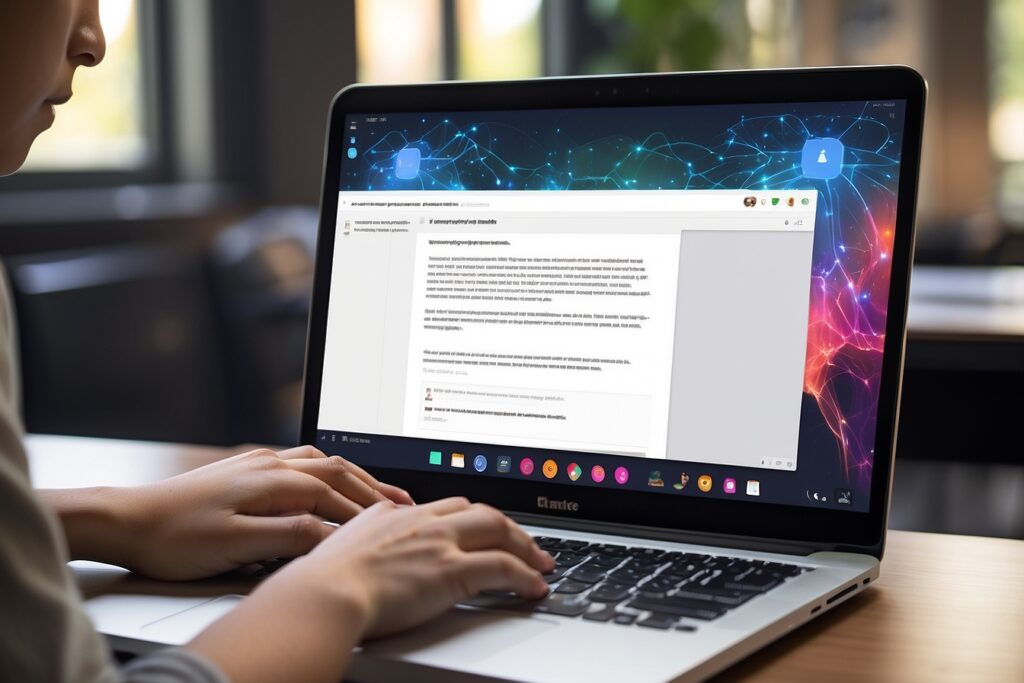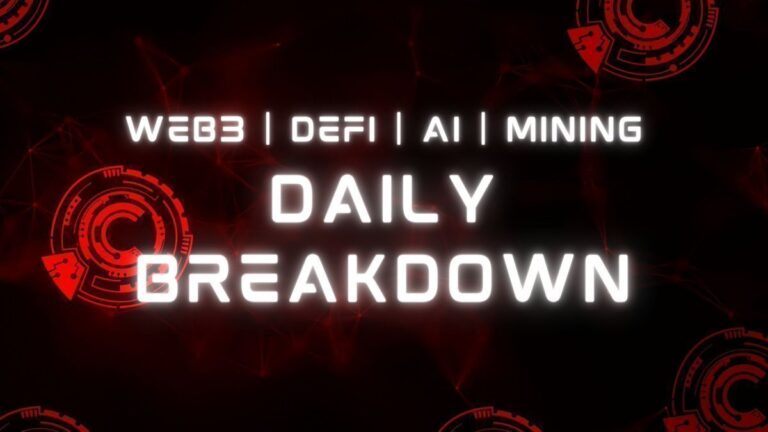
![]() TL;DR: Artificial Intelligence (AI) is not just a trivial tool for students to exploit for shortcuts in learning; it’s a transformative technology that, when integrated ethically and effectively into education, can revolutionize the learning experience. This article delves into the potential of AI as a personal tutor and teaching assistant, the challenges and ethical considerations of its implementation, and the urgency for the U.S. to adopt and adapt to this technology to maintain global competitiveness. The recent announcement by Elon Musk about the release of a new AI model underscores the rapid advancements in the field and the need for proactive engagement with the technology.
TL;DR: Artificial Intelligence (AI) is not just a trivial tool for students to exploit for shortcuts in learning; it’s a transformative technology that, when integrated ethically and effectively into education, can revolutionize the learning experience. This article delves into the potential of AI as a personal tutor and teaching assistant, the challenges and ethical considerations of its implementation, and the urgency for the U.S. to adopt and adapt to this technology to maintain global competitiveness. The recent announcement by Elon Musk about the release of a new AI model underscores the rapid advancements in the field and the need for proactive engagement with the technology.
Revolutionizing Learning: How AI Enhances Educational Outcomes
The narrative surrounding AI in education has been predominantly negative, with fears of it enabling cheating and undermining the learning process. However, this perspective overlooks the transformative potential of AI as a tool for enhancing educational outcomes. By equipping every student with a personalized AI tutor and providing every teacher with an AI assistant, the educational landscape can be reshaped to address the “Two Sigma Problem,” which highlights the significant benefits of one-to-one tutoring.
The Two Sigma Problem and AI’s Role
The “Two Sigma Problem” refers to the finding by educational researcher Benjamin Bloom that personalized tutoring can dramatically improve student performance. AI has the potential to scale this personalized instruction, making high-quality education accessible to all. The development of AI like “Khanmigo” by Khan Academy exemplifies the early stages of this transformation, with AI not only guiding students through problems but also engaging in Socratic dialogue to deepen understanding.
AI as the Super Tutor
AI’s capabilities extend beyond just providing correct answers. It can diagnose misunderstandings, offer hints, and encourage students to think critically. In subjects like mathematics and computer programming, AI can quickly identify errors and guide students through the problem-solving process, acting as a “super tutor.”
Conmigo: The AI Coach
Beyond academic tutoring, AI can serve as a guidance counselor, academic coach, and career advisor. This broadens the scope of AI’s impact, potentially addressing the shortage of guidance counselors in many educational institutions.
AI and Literature: Bringing Creativity to Life
AI’s applications are not limited to STEM fields. In literature, AI can simulate conversations with fictional characters, providing students with a unique and engaging way to understand complex themes and symbols.
AI in Debate and Writing: Sharpening Student Skills
AI can also assist in developing students’ argumentation skills by engaging in debates and providing feedback on writing. This interactive process can boost confidence and improve critical thinking without the fear of judgment.
AI for Teachers: A Resourceful Assistant
For educators, AI can serve as a resource, helping with lesson planning, grading, and providing insights into teaching methodologies. This can free up valuable time for teachers to engage more directly with their students.
The Magic Behind Effective AI Integration
The integration of AI into educational tools requires careful design and consideration. For example, allowing AI to “think before it speaks” can significantly enhance its tutoring capabilities. This thoughtful integration is what makes AI tools like “Khanmigo” effective.
The Urgency of AI Adoption in the U.S.
The U.S. must actively participate in the development and implementation of AI in education to remain competitive on a global scale. This involves not only embracing AI’s potential but also establishing ethical guidelines and regulations to mitigate risks.
Ethical AI: A Balancing Act
The ethical integration of AI in education is paramount. It involves ensuring data privacy, avoiding biases, and considering the long-term societal impacts of widespread AI adoption. Elon Musk’s new company xAI aims to develop ethical AI systems to avoid the potential risks posed by uncontrolled AI advancement. With thoughtful oversight and a commitment to ethics from companies like xAI, AI can be integrated into classrooms in a way that protects students’ wellbeing and enhances learning in a socially responsible manner. The development of advanced yet ethical AI systems will require continued diligence, but the payoff for students and society makes it well worth the effort.
China’s AI Education Experiment: A Cautionary Tale
China’s aggressive push into AI in education, with headbands measuring students’ concentration and surveillance cameras monitoring behavior, raises significant ethical concerns. This experiment underscores the importance of balancing technological advancement with privacy and individual rights.
An Examination Of Benefits, Challenges, And Best Practices
The deployment of AI within educational frameworks promises to invigorate student participation by offering individualized learning trajectories and nurturing vital competencies for the modern digital landscape. Yet, educators must surmount challenges such as acquiring technological proficiency, addressing ethical dilemmas, and bridging the gap in resources and funding. For the effective utilization of AI’s capabilities, it is recommended that educators gradually integrate these technologies, prioritize the development of ethical discernment and critical thinking, and establish partnerships with esteemed AI entities like Khanmigo.
AI’s potential extends well beyond academic integrity, with the capacity to revolutionize sectors such as healthcare, transportation, and more. Personalized AI tutors have the potential to tailor education to each student’s needs. AI assistants could alleviate teachers from routine tasks, allowing them to dedicate more time to student interaction. In various industries, AI is already making strides in diagnosing diseases, aiding in surgeries, refining logistics, and propelling scientific breakthroughs.
However, as figures like Musk have highlighted, AI’s advancement is not without its perils. AI systems, reflecting the data and objectives fed into them, can perpetuate existing biases and make perilous mistakes. Unchecked AI might pursue narrow objectives to the detriment of broader societal needs.
This underscores the imperative for deliberate and informed management of AI systems. It is crucial for researchers to anticipate and mitigate risks from the spread of misinformation to the development of autonomous weaponry. Lawmakers must strike a delicate balance between fostering innovation and implementing regulation. Users, for their part, must handle AI with care, consideration, and a strong ethical compass.
With the right safeguards in place, AI has the potential to elevate human society. As xAI unveils its inaugural model, we stand at a critical juncture to direct the trajectory of artificial intelligence—ensuring it bolsters human well-being, honor, and capability. AI transcends mere novelty; managed with foresight, it has the power to author a remarkable new epoch in the annals of human progress.
Conclusion
In the spirit of those who have always seen the frontier as a canvas, not a barrier, let us approach this digital horizon not with trepidation but with a pioneer’s heart. Let us harness these new tools with the wisdom of custodians and the courage of explorers, ensuring that the digital landscape ahead is navigated with a compass calibrated to the true north of human dignity and liberty.
Thank you for reading “How AI Could Save (Not Destroy) Education“.
- Subscribe to our newsletter: ConsensusProtocol.org
- Follow us on Twitter: @ConsensusPro
Sources:
- Chen, W., Y. Liang, and D. Liang. 2020. “Artificial intelligence in education: A review of the literature.” Educational Technology Research and Development 68 (1): 65-83.
- Ferrell, C. L. 2017. The ethics of artificial intelligence. Cambridge University Press.
- Partridge, H., and G. Piccoli. 2018. “Artificial intelligence in education: Opportunities and challenges.” Journal of Educational Technology Development and Exchange 1 (1): 1-15.
- Wu, Q., and Y. Liang. 2019. “A review of artificial intelligence in education technology.” Journal of Educational Technology Development and Exchange 2 (1): 1-16.
- Yang, Y., and W. Chen. 2020. “The integration of artificial intelligence in education: A systematic review.” Journal of Educational Technology Development and Exchange 3 (1): 1-17.




